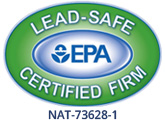Identifying Issues with Cast Iron Pipes
 Homes built before 1970 are more likely to have cast iron or galvanized steel pipes. Used in North America since the 19th century, cast iron pipes provided strength and withstood pressure, whether used for a sewer system or home’s plumbing.
Homes built before 1970 are more likely to have cast iron or galvanized steel pipes. Used in North America since the 19th century, cast iron pipes provided strength and withstood pressure, whether used for a sewer system or home’s plumbing.
While they can last for decades, cast iron pipes eventually start to deteriorate, often through corrosion. This not only changes their structural integrity but can also affect the water quality in your home, increase the number of backups and contribute to leaks.
Homeowners with cast iron pipes may experience sewage backups, an unexplained pest problem, mold growth or find that water drains slowly and clogs more easily form. If you own an older property, it’s recommended you replace some or all your cast iron pipes if you notice any of the following signs.
Rusting
Depending on when your galvanized steel or cast iron pipes were installed, they might have been made with lead. Once they start to rust and corrode, these substances enter your home and neighborhood’s water supply.
Rust also accumulates inside the pipe, gradually creating a clog. As more rust gathers in this one area, you may find water is slow to drain from sinks, bathtubs and toilets.
Poor Water Quality
This occurrence takes on a few forms. At the basic level, corroded cast iron pipes can turn the water coming out of your faucet yellow or brown.
More seriously, your home may develop black water, a product of a sewage backup. This occurs when waste passing through your pipes gets trapped by a clog and never completely drains, resulting in bacteria and fungi growth. From here, you may notice a strong, unpleasant odor and exposure becomes a health hazard. Should this issue go undetected, your loved ones could develop unexplained infections.
Outside of your home, a broken or rusting cast iron pipe can pollute local water sources, including aquifers and ground water.
Broken, Leaking Pipes
Aside from corrosion, sulfuric acid can cause cast iron pipes to leak and eventually break. Tree roots also have potential to grow into these pipes once a leak starts to form.
When a cast iron pipe breaks, you could be dealing with a combination of issues even before you identify the leak:
- Pests: Infestations can start inside or outside, with pests attracted to the water source.
- Mold: Mold growth can form wherever the pipe begins to leak and may occur in multiple places.
- Odor: When a cast iron pipe breaks, the sulfuric gas contained inside can escape, resulting in a distinctive, sour odor.
- Changes in Lawn Quality: If patches of grass suddenly look richer and greener, this pattern could be a result of leaking pipes.
- Cracking Foundation: Leaking water from a pipe passing through your foundation can result in structural cracks. You may see this outside or along the walls of your home.
- Puddles of Sewage: Eventually, pipes running near the outside of your house may start to leak sewage onto your lawn.
- Depreciating Home Value: From unexplained pests to mold growth, these factors can decrease what your home could be worth when you attempt to sell.
Repairs
If your home has cast iron pipes and you’re experiencing problems, MJ Fahy & Sons can assess the interior for any leaks, cracks or clogs. Recommended repairs may involve replacing damaged pipe, adding a lining to weakened areas or removing the full system to add PVC pipes.
If you have noticed any of these signs with cast iron or galvanized steel pipes, contact the residential plumbers at MJ Fahy & Sons to make an appointment today.




